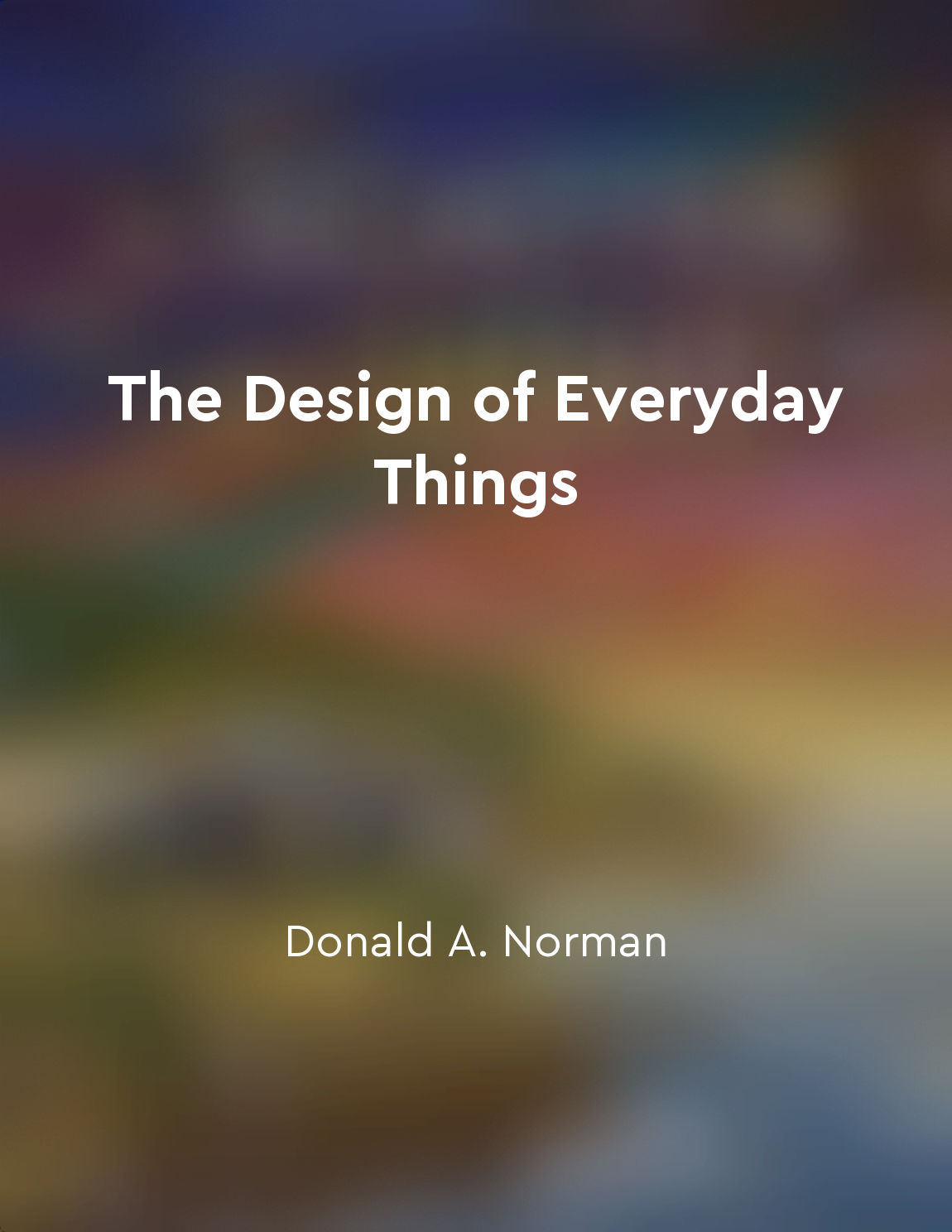Memory aids like labels and cues improve usability from "summary" of The Design of Everyday Things by Donald A. Norman
Memory aids like labels and cues play a crucial role in enhancing the usability of products. These aids provide users with valuable information that helps them navigate and interact with a product more effectively. Labels, for example, serve as a form of external memory, reminding users of the function or purpose of different elements within a product. Without clear labels, users may struggle to understand how to operate a product, leading to frustration and decreased usability. Furthermore, cues can guide users towards the correct actions or choices within a product. By providing visual or auditory signals, cues prompt users to take specific steps or make informed decisions. For instance, a flashing light on a device may indicate that an error has occurred, prompting the user to investigate further. Without such cues, users may overlook important information or fail to notice critical feedback, impairing their ability to effectively use the product. In essence, memory aids like labels and cues act as a form of communication between the designer and the user. They bridge the gap between the user's mental model of a product and its actual functionality, helping users to make sense of complex systems or interfaces. By incorporating these aids into the design of everyday objects, designers can significantly improve the overall usability and user experience.- Memory aids like labels and cues are essential components of user-centered design. By providing users with clear and informative cues, designers can enhance the usability of products and ensure that users can interact with them efficiently and effectively. In this way, labels and cues serve as valuable tools for facilitating user understanding and improving overall product usability.


